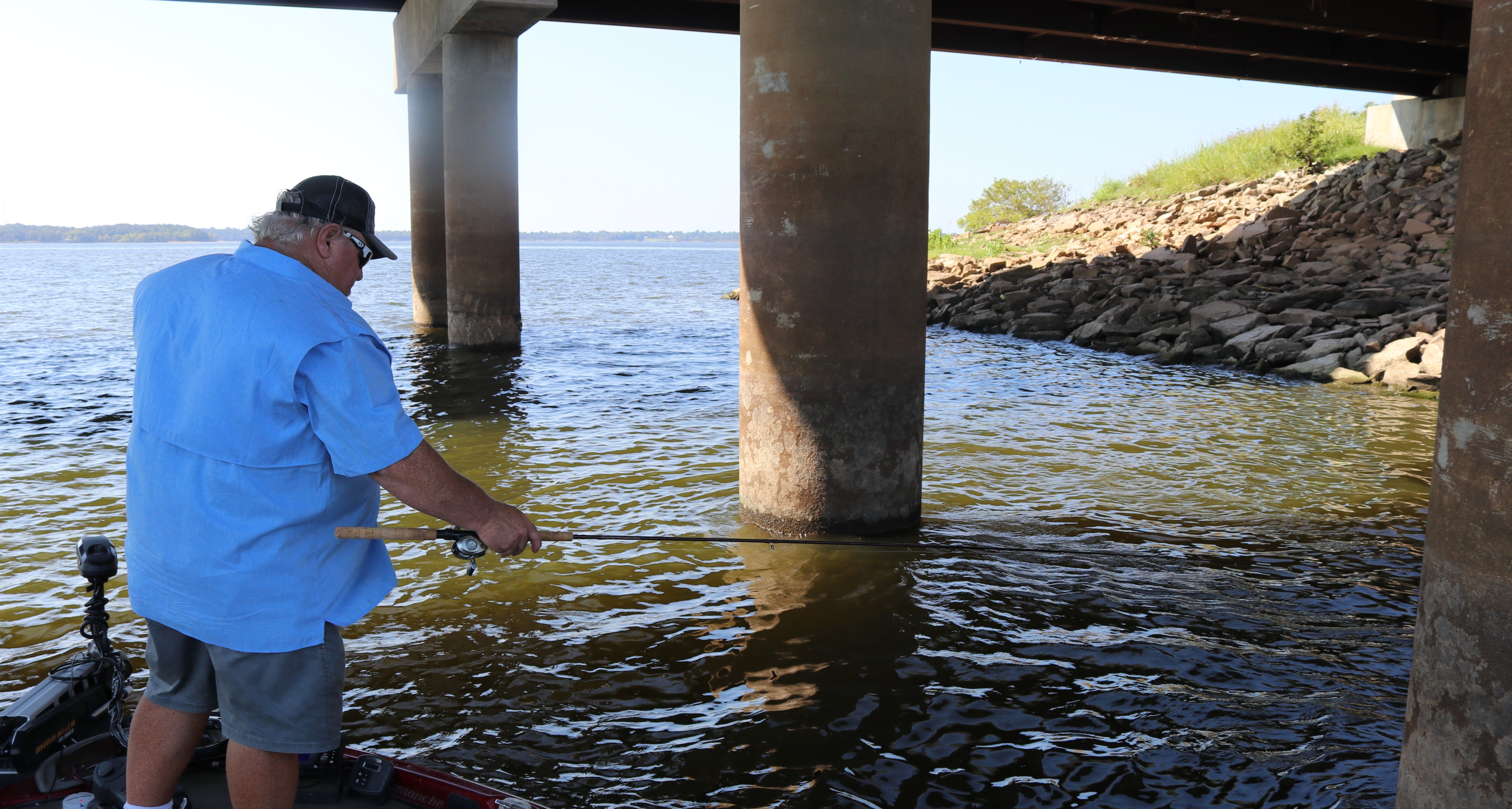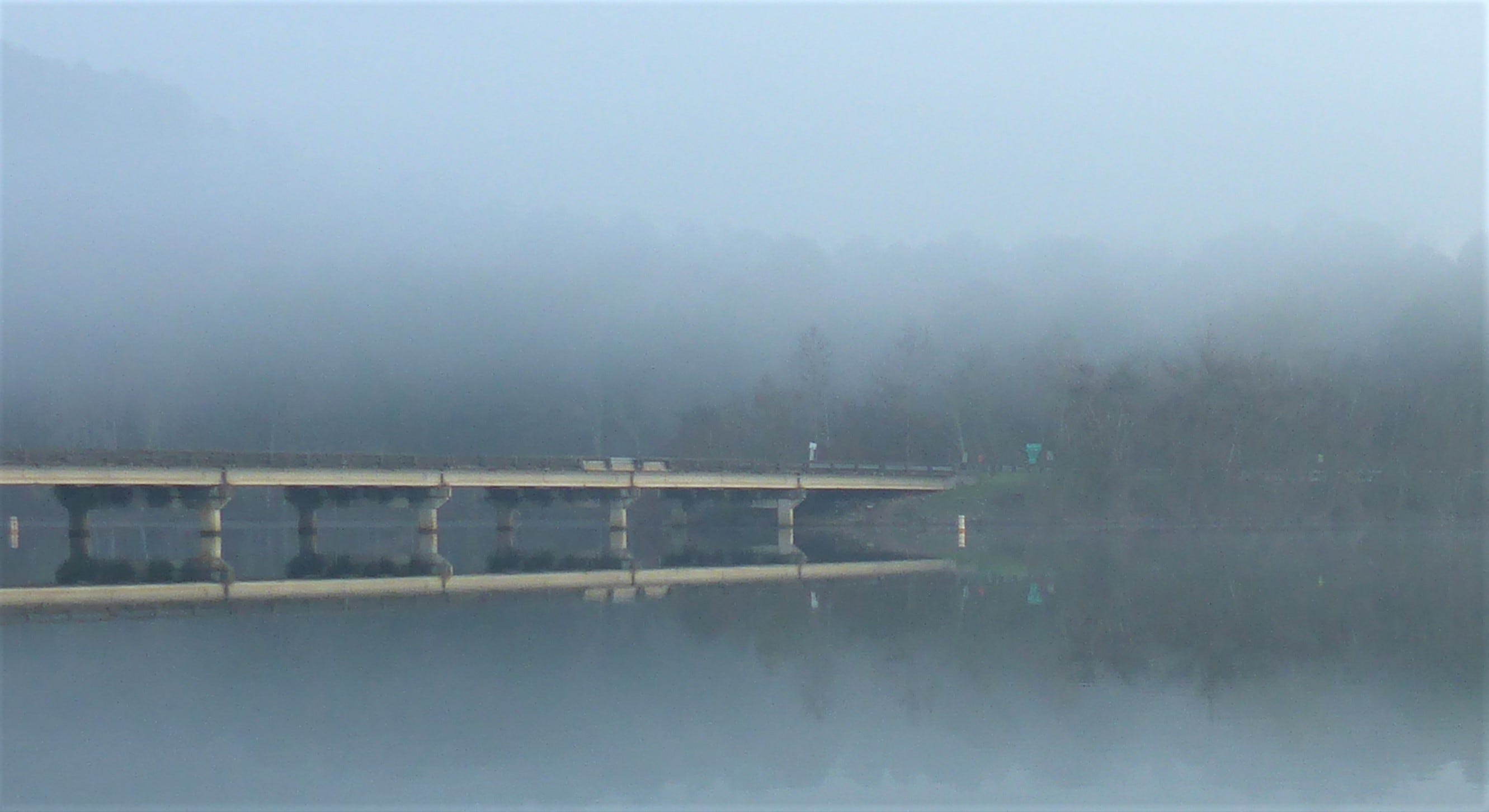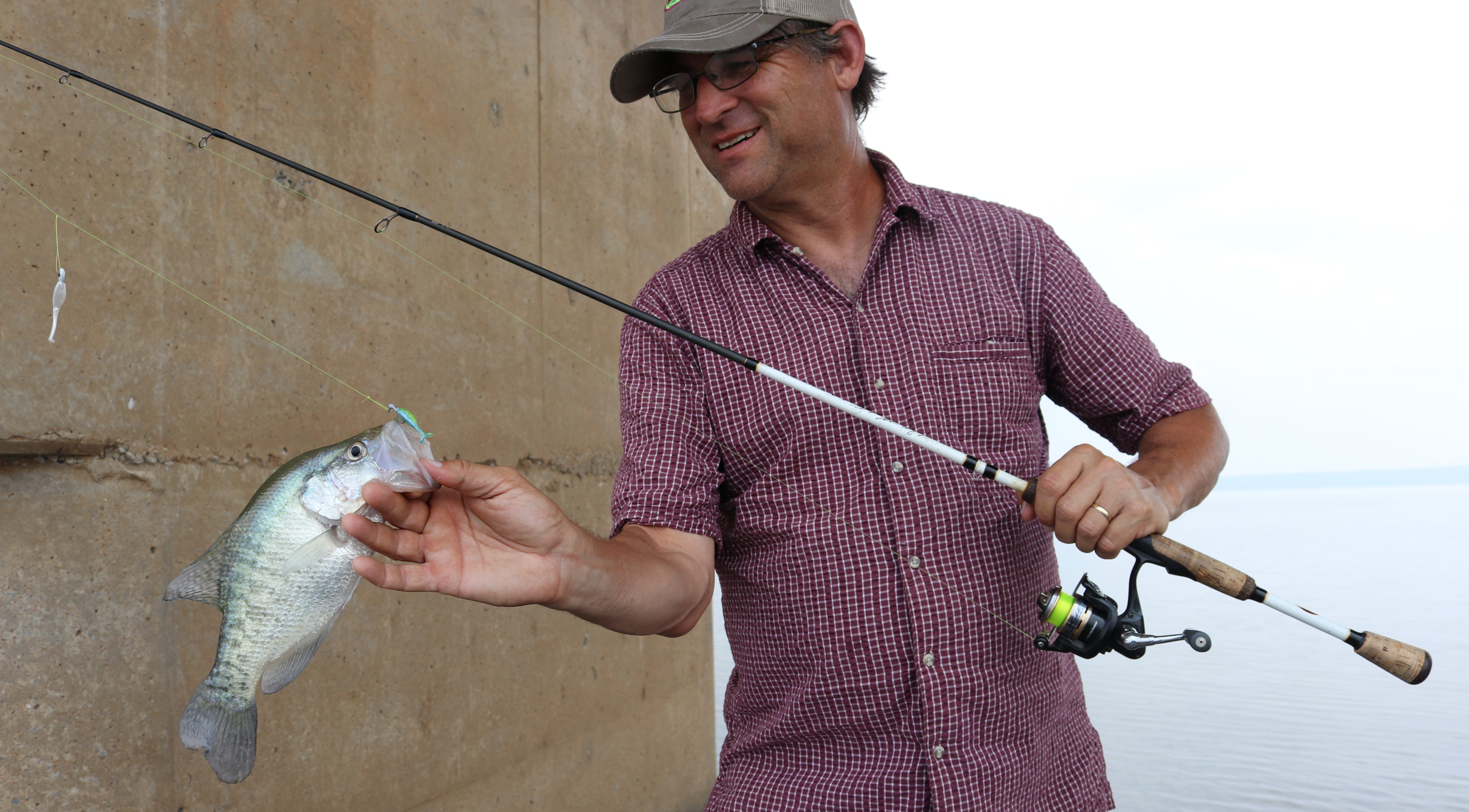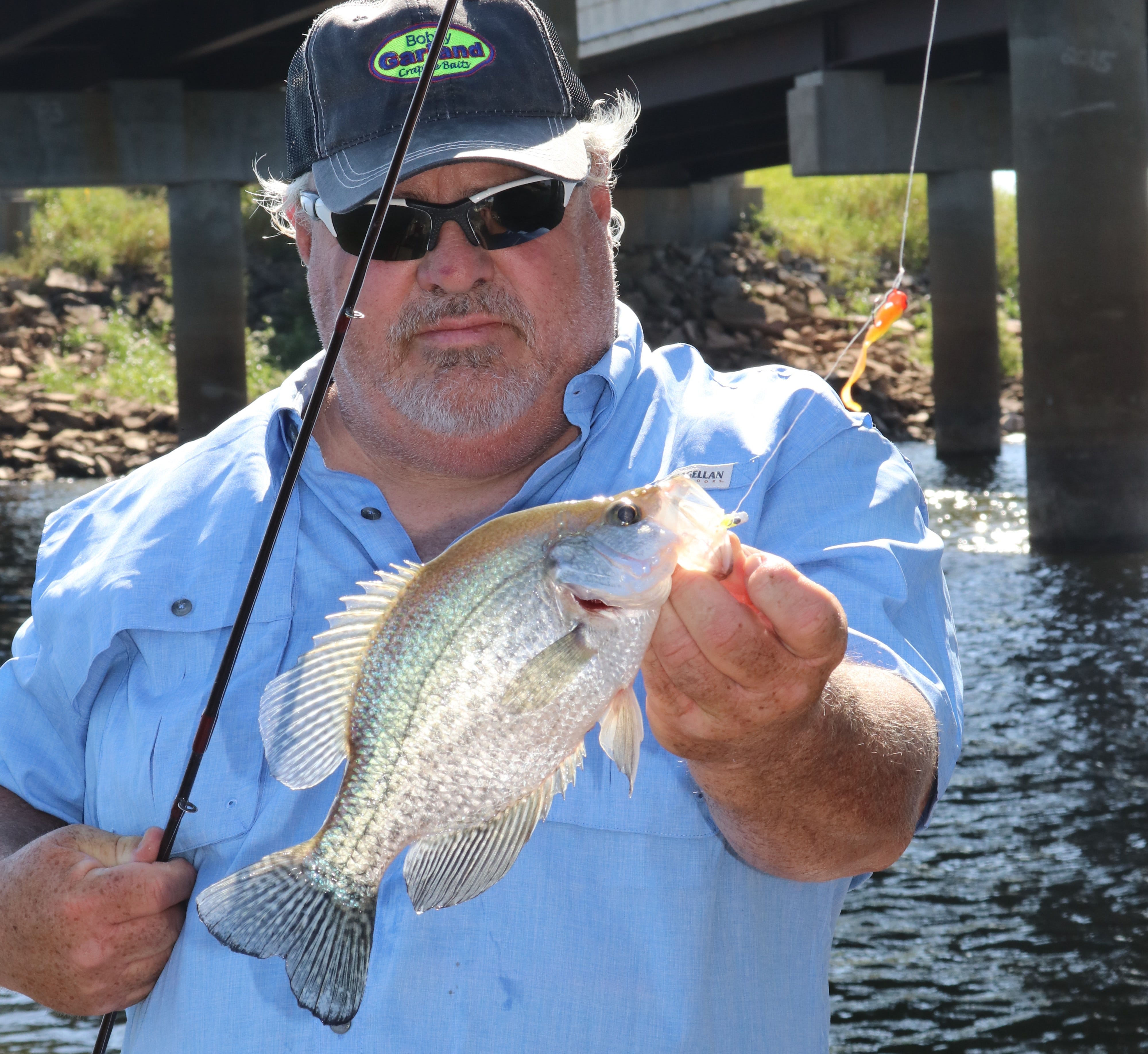- Jul 27, 2023
6 Advantages of Bridges for Summer Crappie Fishing
Bridges are great locations for catching crappie. You know that. Understanding why bridges hold so many fish can help you fish these structures more effectively.
No words needed to be spoken. A bridge was in sight, a short run from the boat ramp, and my buddy and I had never fished the area previously. We went straight to that bridge and started fishing with Bobby Garland Baby Shads, pitching past pilings and letting our baits swing past the structures. Not surprisingly, it didn’t take long to start catching crappie and to figure out patterning clues that would help us catch fish in other spots as the day progressed.
If crappie fishing had a cheat code, bridges would be a major part. So why are bridges so good, and what factors make some bridges more productive than others? We’ll look at six specific advantages that many bridges provide for summer crappie fishing and consider how to use that knowledge to your advantage for fishing bridges effectively and catching more crappie.
1 – All-Day Shade


Equipped with large eyes, crappie are light sensitive, so shade offers year-round appeal, especially in clear water. During the summer, when water temperatures soar, the draw of shady areas to crappie only increases.
Unlike a tree or a steep bank, a bridge does not only offer morning or afternoon shade. Because a bridge spans the water, some areas remain shaded all day. Lower bridges offer the best all-day shade because the shade band moves less as the sun travels across the sky, thus concentrating the shading effect.
Some shifting of the shade occurs under any bridge as the day progresses, and the crappie often will move with the shade. Keep this in mind as you search for fish and know the bridge’s sweet spot may differ from morning to afternoon.
For high bridges, where the shade of the bridge is far from the bridge structure anytime the sun is not straight up, pay extra close attention concentrated shade bands from the pillars and piers that support the bridge.
2 – Channel Location


Creek and river channels are like highways for crappie, and bridges are like rest areas or even tourist attractions, where the fish stop and congregate. Not every bridge over a reservoir has a channel running beneath it, but many (if not most) do.
A channel, whether it is a main creek or river channel with a hard break or little more than a ditch, appeals to crappie in several ways. First, it provides a vertical edge to hold along, which aids concealment. Next, it provides a range of depths in a small area, making it easy for fish to travel up and down in the water column as conditions change and stay near an edge without traveling far. Finally, it holds food, as minnows and shad often relate to channel edges.
For bridges with causeways, the bridge is typically right at the channel, and often the channel is almost as wide as the bridge itself. For longer bridge spans, channel markers can help you identify the channel edges. It’s worth noting that while channels offer distinct appeal and crappie commonly hold on the break, they also might be near the drop but not right by it, instead suspended over deeper water or using the flat, outside of the channel.
3 – Diverse Hard Cover


Crappie like hard cover and structure, and many bridges offer an abundance of both. The pilings that support most bridges provide obvious, important structure, and often there is more there than meets the eye. The pilings themselves sometimes are joined by large concrete structures that provide fabulous horizontal structure (and enhanced shade) beneath the surface, and the foundations of pilings are often broad, creating extensive bottom structure.
Of course, some bridges are supported by broad concrete piers, instead of pilings, or have extra support structures at each end, and these provide extensive structure for crappie.
Riprap also provides major benefit to crappie, because of the concealment it provides and because living communities form around riprap, beginning with plankton, which means minnows commonly school close to riprap.
Many bridges offer steep riprap under the bridge itself. In addition, the riprap commonly forms points on both sides and ends of a bridge, the riprap sometimes extends well away from the bridge structure, along a causeway. Crappies will cruise along riprap banks to hunt. Changes in pitch or rock type, slight cuts in the bank and the points just out from the bridges tend to be key areas.
Because a bridge’s structure offers obvious key zones, this makes it dramatically easer to locate and catch fish in less familiar waters and figure out patterns. Key depths, color preferences and demonstrated preference for presentations can then help you catch more crappie in other areas.
4 – Current Funnel


If water is moving, whether from natural river flow, reservoir power generation or a persistent wind, that movement tends to be accentuated through pinch points, which is where bridges typically are located.
Extra current might not sound like a draw since crappie gravitate to calm waters and typically avoid significant current. Because of the structure just discussed, though, current gets broken and forms defined eddies downstream of pilings, piers and corners. Current lines broken by eddies create easy ambush points for crappie and other gamefish, prompting opportunistic feeding and make fish positioning predictable. A bait presented barely in the current and moving naturally in the current’s direction capitalizes on the crappie’s ambush positioning.
Remember the structures that are beneath the surface and the underwater eddies formed by such structures as you search for fish and strategize.
5 – Nightlights


Many bridges have lights on them that stay illuminated all night – some to light a roadway, some to provide navigation aid to boaters, and some for pedestrians on a bridge or beneath it. Whatever the purpose, wherever some of that light hits the water and keeps an area lit, that draws plankton, followed by minnows and crappie.
Areas that remain lit are obvious places to cast at night, and some specific spots draw concentrations of crappie night after night. More importantly, having some light around a bridge at night generally makes that bridge more appealing, and that impacts the number of fish that use the structure day and night in the same way other features do.
From a night fishing standpoint, it’s hard to beat setting up with a floating light on the water to create a well-defined, illuminated area, letting the minnows and crappie come in, and then working the lit area. Often, the best fishing occurs near the edge of the light, where crappie can hold in the darker area and ambush minnows in the light.
An illuminated slip float, like a Thill Splash Brite, allows you to suspend a crappie jig in margin areas but still see your float well to know when to set the hook. Glow in the dark elements, including Crappie Pro Mo’ Glo Jigheads and glowing bait colors and Bobby Garland Slab Jam, are valuable for working margin areas.
6 – Bank Fishing Access


Beyond all the things they do to attract and position crappie, bridges provide another critical advantage to many anglers. They put fish within easy casting range of the bank, often in areas with good public access and that are clear of brush and other cover. Every bridge is different, of course, but MANY offer good access for a variety of bank fishing techniques to fish the riprap, the first set of pilings and everything in between.
Bank access is extra important if you neither own a boat nor have opportunities to get out on someone else’s boat. Beyond that, though, bank fishing under a bridge allows for short after-work outings when you might not want to go through the trouble of launching a boat
Depending on the slope of the bank and how fish are positioned, dipping a Baby Shad close to the riprap, casting and swimming a Stroll’R or suspending a Mayfly beneath a float and casting close to pilings all have virtue for the shoreline approach.



